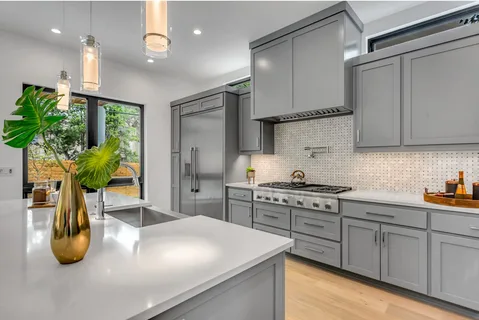Sustainable Site Design for Spaces That Blend Beauty and Function
Can outdoor spaces be both environmentally friendly and visually appealing? More designers, developers, and communities are asking this question as sustainability becomes a bigger priority in how we build and design. The answer is yes, and it starts with smart, thoughtful site planning. Sustainable site design isn’t just about planting trees or using recycled materials; it’s about creating spaces that serve both people and the planet.
From water-efficient layouts to shaded seating areas, these designs prioritize long-term impact while maintaining a visually appealing appearance. With the right approach and support from expert landscape design services, outdoor areas can be both practical and beautiful.
Design with Nature, Not Against It
One of the core ideas in sustainable site design is working with the land rather than forcing it into a mold. That means paying attention to natural slopes, sunlight, wind patterns, and native plant life. By doing so, designers can reduce erosion, manage stormwater naturally, and lower long-term maintenance needs. Instead of importing non-native plants that require heavy watering and fertilizers, native greenery thrives with minimal intervention and attracts local wildlife. These small choices make a big difference in keeping the environment balanced and healthy.
Smart Water Use Without Sacrificing Style
Water conservation plays a huge role in sustainable site planning. But that doesn’t mean sacrificing lush gardens or relaxing green spaces. Today’s designs often incorporate features such as drip irrigation, permeable paving, rain gardens, and bioswales to manage water efficiently. These elements help capture and filter rainwater, reduce runoff, and recharge groundwater supplies. Decorative features, such as water walls or ponds, can also be part of the plan if they are built with conservation in mind. The result? A visually soothing space that also respects local resources.
Blending Utility with Aesthetic Appeal
Function and beauty aren’t mutually exclusive. Some of the most impressive sustainable spaces look great while serving a clear purpose. For example, a shaded plaza with native trees can reduce the heat island effect and offer a pleasant place to rest. A green roof insulates a building and provides a peaceful gathering spot. Outdoor walkways designed with solar lighting or reclaimed materials add charm while reducing energy use and waste. These features prove that thoughtful design can be attractive and efficient.
People-Centered Spaces Make the Biggest Impact
Sustainability isn’t just about protecting the environment—it’s also about creating places people want to use. Sustainable site design prioritizes people’s needs by providing comfort, safety, and accessibility, thereby enhancing the overall quality of life. Well-placed seating, shaded walkways, bike paths, and inclusive entrances make a site usable regardless of age or ability. And when people enjoy being in a space, they’re more likely to care for it, creating a positive cycle of long-term upkeep and community involvement.
Planning for Tomorrow Starts Today
Sustainability doesn’t happen by accident. It takes early planning, collaboration, and the right team to bring these ideas to life. From choosing low-impact materials to designing for long-term climate resilience, each decision counts. Working with professionals who understand environmental science and creative design is the best way to ensure success. That’s where expert landscape architects step in, combining practical know-how with design skills to ensure every square foot serves a purpose.
In the end, sustainable site design is about more than trends—thoughtful choices that balance what looks good with what does good. By working with experienced landscape design services, you can create outdoor environments that reflect beauty and purpose. Whether it’s a park, campus, or commercial space, designing with intention today helps shape a better tomorrow for everyone who shares it.







